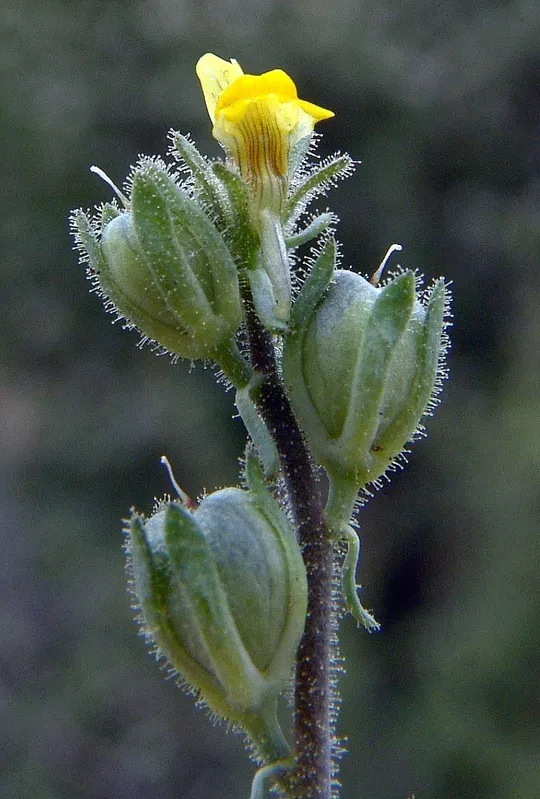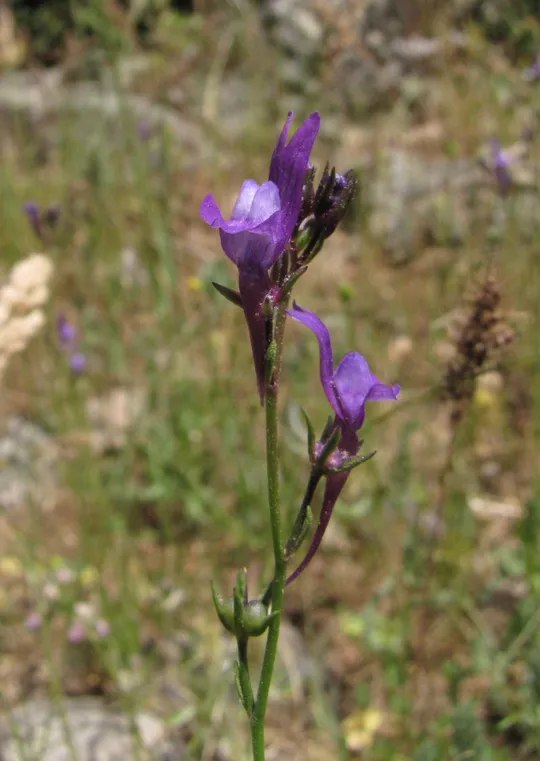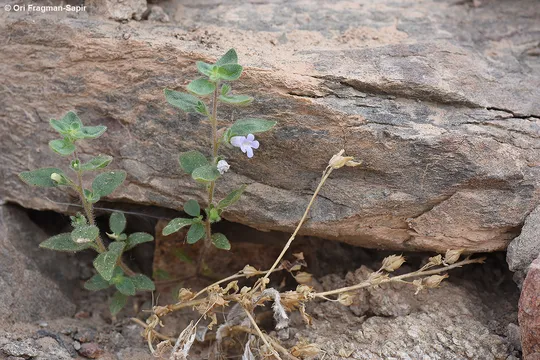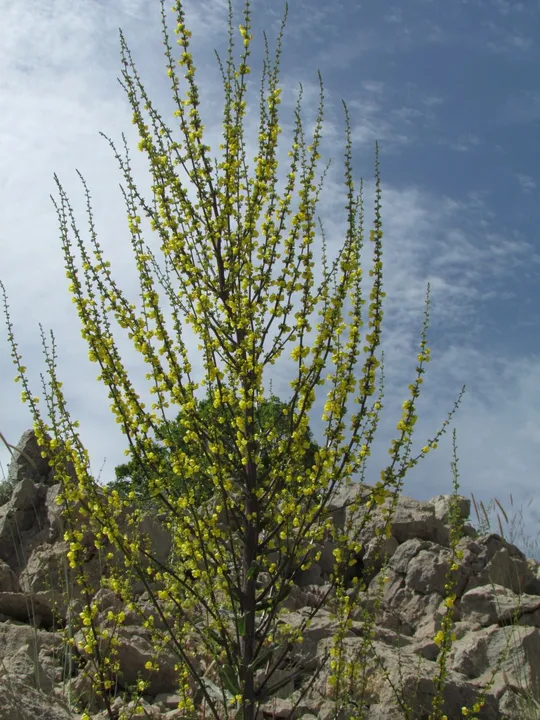Three-leaved Toadflax, Three-coloured Toaxflax
Linaria triphylla
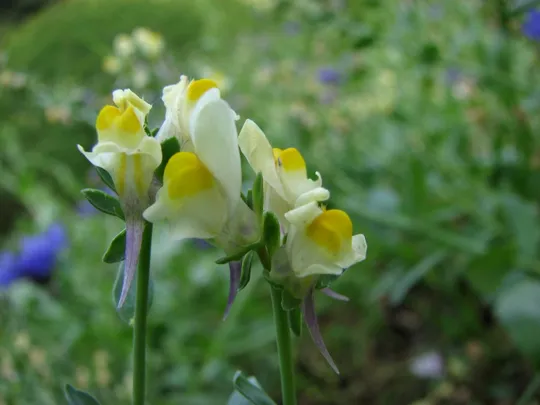
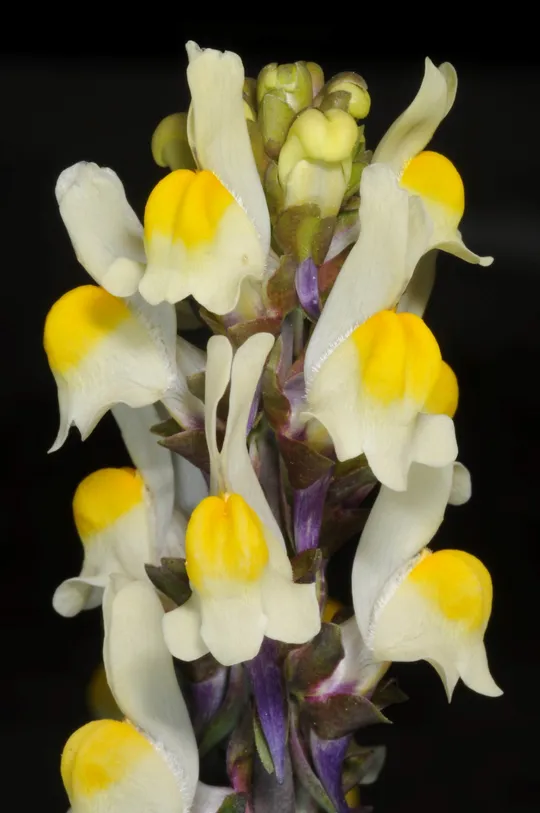
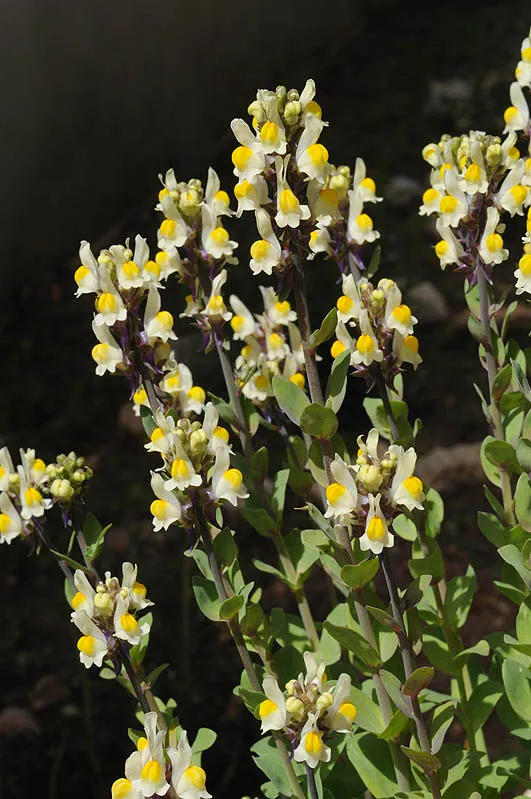
Linaria triphylla grows in the lower
Galilee on only two sites. The first – Giv’at Zakif north of Karmiel, where there are large populations numbering
thousands of plants and Shimron. The species was once collected and observed in
the Jezreel Valley as well, but is now extinct at 12 sites in the two regions.
Most of the sites on which it was found between the 1920s and the 1960s and
from which it is now extinct, are in the Jezreel Valley: Afula, Balfuria,
Merhavia, En Harod, Tel Yosef and Bet Alfa. In the Lower Galilee, it was
collected in the 1920s and 1930s in Rama, near Kaduri and at Alone Aba.
Cultivated and fallow fields on dark deep alluvial soil,
but also on stony limestone soils.
For the genus – see Linaria pelisseriana. The color of L. triphylla flowers and its bluish tinge brings
to mind L.
albifrons, a transition
zone and cold desert species characterized by small flowers. It is also close
to L. chalepensis, a delicate plant with small white flowers and a
long narrow spur.
·
Linaria triphylla shows a strong
declining trend in the numbers of sites and populations. It is extinct from one
of the regions in which it once grew – the Jezreel Valley. It is also extinct in
most of the sites in the two regions in which it grew in the past. Its
extinction is definite, as the species was not located there during the rare
plant surveys conducted in the Lower Galilee and the Jezreel Valley.
·
The Giv’at Zakif
populations number thousands
of plants.
·
The reason for the extinction of most
of the L. triphylla populations is
the conversion of the heavy soil habitats in the valleys to intensive
agriculture. This process also threatens the remaining populations.
·
The species is not protected in nature
reserves in Israel.
·
Apparently L. triphylla is not endangered in
the Western Mediterranean Basin countries, but information from the Eastern
Mediterranean Basin countries regarding its threat status is lacking. In Switzerland,
it has been classified as “Critically Endangered" (CR).
The known Linaria triphylla populations at Giv’at Zakif and Shimron should be protected
and the destruction of the sites should be prevented. In view of the successful
cultivation of the species, its seeds should be collected from the large
remaining population, to create backup collections in Botanical and refuge
gardens. Reintroduction to localized heavy soil areas that will be declared as
preservation sites for the species group characteristic of heavy soils in
fallow and traditionally cultivated fields should be considered. The cultivation
of L. triphylla in gardens should be encouraged.
Linaria triphylla is a
Mediterranean species found in Spain, France, Italy, Greece (including the
islands), western Turkey and Israel. It is more common in the western
Mediterranean and becomes scarcer and patchy in the east. The plant is
conspicuously absent from Syria and Lebanon, Asiatic Turkey and Cyprus.
Linaria triphylla is an annual
plant of heavy valley soils in the Lower Galilee and the Jezreel Valley. The species
is extremely rare today due to the change in the nature of agriculture and
development trends on the heavy soils of the northern valleys. L. triphylla is not protected
in Israel.
Current Occupancy Map
| 1000 squre meter pixel | 5000 squre meter pixel | 10000 squre meter pixel | |
|---|---|---|---|
| number of observations | 0 | 0 | 0 |
| in total pixels | 0 | 0 | 0 |
| Family | Scrophulariaceae |
| Classification | On the endangered species list |
| Ecosystem | Mediterranean |
| Chorotype | Mediterranean |
| Conservation Site | Giv’at Zakif north of Karmiel |
| Rarity |
1
3
6
|
|---|---|
| Vulnerability |
0
4
4
|
| Attractiveness |
0
1
4
|
| Endemism |
0
0
4
|
| Red number |
1
4.7
10
|
| Peripherality | W |
| IUCN category | DD EW EX LC CR EN VU NT |
| Threat Definition according to the red book | Endangered |
 Based on:
Based on:
